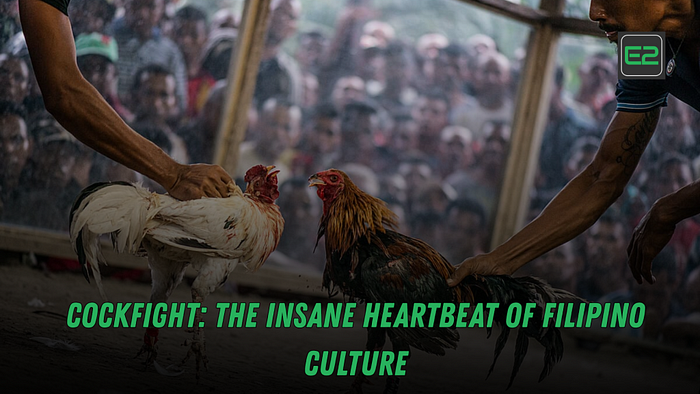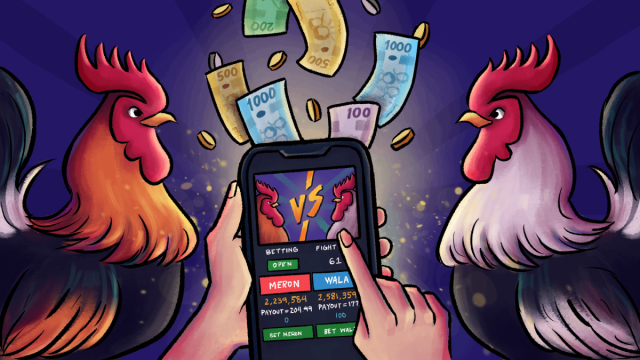Cockfight: The Insane Heartbeat of Filipino Culture
 John Wick
John Wick
In the Philippines, cockfight is more than just a sport; it’s a deeply rooted cultural tradition that has survived centuries. From its ancient origins to its presence in the digital age, cockfighting reflects not only the passion and resilience of the Filipino people but also their identity, values, and way of life.
Historical Roots
Cockfighting in the Philippines dates back thousands of years — long before Spanish colonization. In fact, Italian scholar Antonio Pigafetta, who chronicled Ferdinand Magellan’s expedition in 1521, observed natives engaging in cockfighting upon arrival in the Visayas. That moment alone marks the sport as an integral part of pre-colonial Filipino life, showing it wasn’t an imported practice, but one born of local tradition.
Cultural Significance
In Filipino society, cockfighting is far more than a bet or a match. It’s a social gathering, a ritual, and sometimes a source of identity for entire communities. The local cockpits (called sabungan) aren’t just arenas — they’re meeting places. For many rural areas, they serve as the equivalent of a public square. Elders debate, young men learn, and neighbors reconnect.
The match itself is also deeply symbolic. It represents bravery (tapang), strategy, and honor. In many provinces, owning a winning rooster elevates one’s social standing.

Economic Impact
The cockfighting industry is a major contributor to the Philippine economy — with estimates placing its value in the billions of pesos annually. From breeders and trainers to veterinarians, feed suppliers, gamefowl equipment sellers, and of course, bettors — the industry sustains a vast web of livelihoods.
There are about 2,500 licensed cockpits across the country, and breeders raise millions of roosters yearly to compete. A single high-quality fighting rooster can cost tens of thousands of pesos — even more if it’s proven a champion.
READ HERE ABOUT: TOP 10 WEIRDEST FIBA 3X3 RULES THAT YOU PROBABLY DON’T KNOW!
Legal Framework
In recognition of its cultural and economic weight, cockfighting is regulated by law in the Philippines. The primary regulation is Presidential Decree №449 or the Cockfighting Law of 1974. It governs everything from:
When fights can be held (usually on Sundays and holidays),
Who can own and operate cockpits,
What kinds of betting are allowed, and
The prohibition of minors and public officials from participating.
This regulation allows the tradition to exist within legal and ethical bounds, while preserving public order.
The Rise of E-Cockfighting (e-sabong)
In recent years, cockfighting took a digital turn. E-cockfighting, or e-sabong, became massively popular during the pandemic. People could stream live matches and place bets online, often via mobile phones.
It provided a digital bridge to tradition when physical cockpits were closed — but it also created controversy. Concerns over online gambling addiction, lack of age verification, and its impact on vulnerable sectors prompted national debate. In fact, the Philippine government suspended and later banned e-cockfighting platforms, citing both social and security issues.

The Roosters: Symbols of Valor
In cockfighting, the rooster is king. These aren’t backyard chickens — they are specially bred gamefowls, raised with training, discipline, and care that rival professional athletes. Owners spend years refining bloodlines to produce birds with:
Speed
Aggressiveness
Durability
Strategic intelligence in the pit
Breeds like Sweater, Hatch, Kelso, Roundhead, and Lemon are common favorites among Filipino breeders. Each has distinct fighting styles and temperaments. In some circles, these bloodlines are guarded family secrets, passed down like heirlooms.
Match Day: Ritual and Chaos
Match day in a Philippine cockpit is electric. It begins with rituals:
Roosters are weighed
Their blades (tari) are carefully attached
Trainers warm them up like boxers
Spectators size them up while placing bets
The match itself can last seconds or minutes, but the roar of the crowd, the tension, and the stakes make it an experience like no other.
Betting is often verbal and fast-paced, with hand gestures and call-outs in Filipino gambling lingo. The community around it understands each sign and shout — it’s a language of its own.
Morality and Controversy
Of course, not everyone agrees with the practice. Animal welfare advocates decry cockfighting as inhumane and archaic. They argue that it promotes cruelty and should be banned outright.
Some progressive lawmakers have proposed legislation to phase it out entirely — but they often face pushback, especially from rural provinces where cockfighting is deeply embedded in local culture and economy.
There’s a generational divide too. Younger Filipinos — particularly in urban areas — are more critical of the practice. Many prefer basketball, esports, or other modern forms of entertainment. However, others view cockfighting as an art form and ancestral sport, deserving of respect and regulation rather than erasure.
Cockfighting in Numbers
Over 5 million roosters bred annually for fighting
Estimated industry value: ₱50 billion per year
More than 2,500 licensed cockpits nationwide
Related jobs: over 200,000 Filipinos employed directly or indirectly
These figures don’t just represent birds or pesos — they reflect livelihoods, history, and a way of life.
The Voice of the Masses
Ask anyone in the countryside about cockfighting, and you’ll get passionate answers. For many Filipinos, it’s not just betting — it’s bonding. It’s a source of pride. It’s something they grew up with.
Here’s what some locals say:
“Lolo ko breeder. Tatay ko rin. Ako? Trainer naman. Sa amin, parang tradition na ‘to.”
(My grandfather was a breeder. My father too. Me? I’m a trainer. It’s our tradition.)“Dito sa amin, walang liga ng basketball, pero may sabong. Dito kami masaya.”
(Here in our place, there’s no basketball league — but there’s cockfighting. That’s what brings us joy.)
The Future of Cockfighting
Cockfighting stands at a crossroads. Its supporters argue for modernization, regulation, and cultural respect. Critics call for its abolition in favor of more humane practices.
What’s clear is that cockfighting, for better or worse, is deeply tied to the Filipino identity. The challenge for the nation is how to balance tradition with evolving social values.
Will the cockpit evolve into a tech-regulated, ethical sport? Or will it eventually fade as younger generations move away from it?
Only time — and the collective will of the people — will tell.

CONCLUSION
Cockfighting in the Philippines is not just blood sport — it’s a symbol of history, community, and cultural resilience. It’s where farmers, workers, and townsfolk gather not just to gamble, but to participate in a heritage passed down through centuries.
Whether it continues or transforms, one thing’s certain: cockfighting is woven into the Filipino soul, and any conversation about it must begin with understanding, not just judgment.
Subscribe to my newsletter
Read articles from John Wick directly inside your inbox. Subscribe to the newsletter, and don't miss out.
Written by
